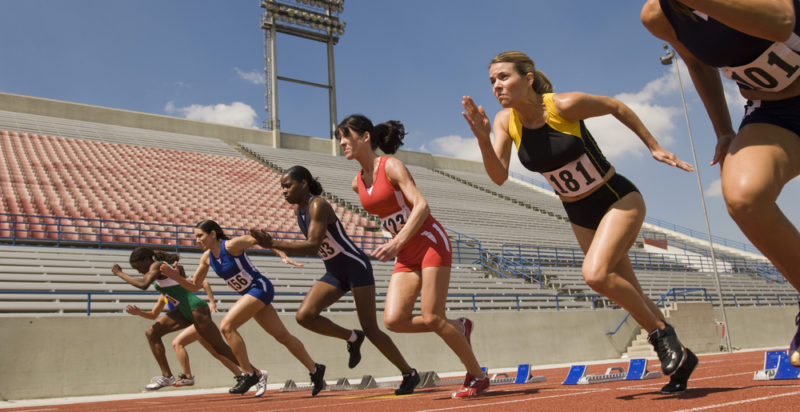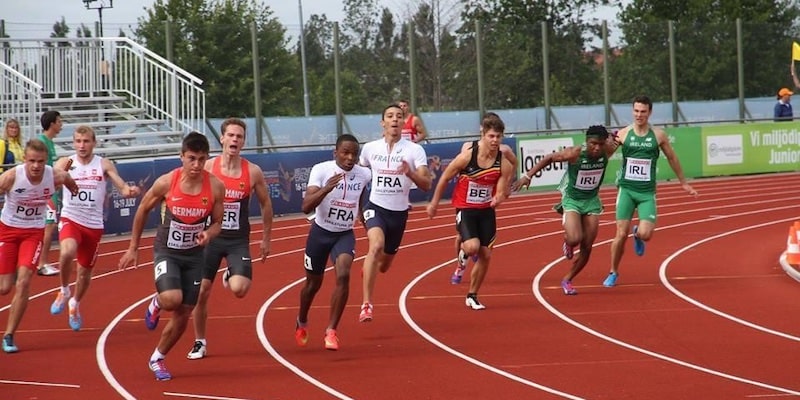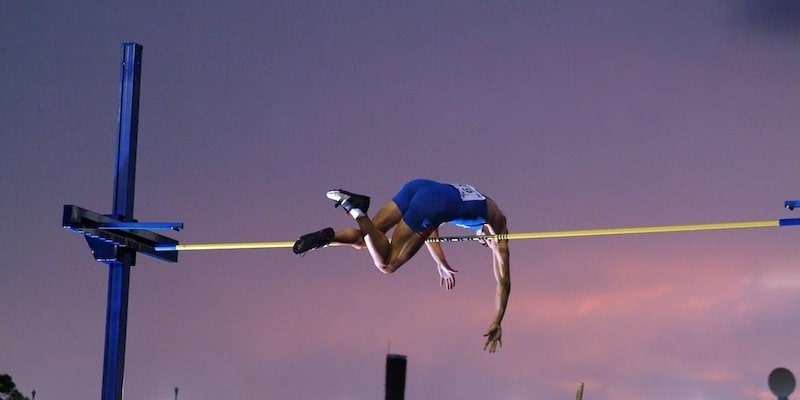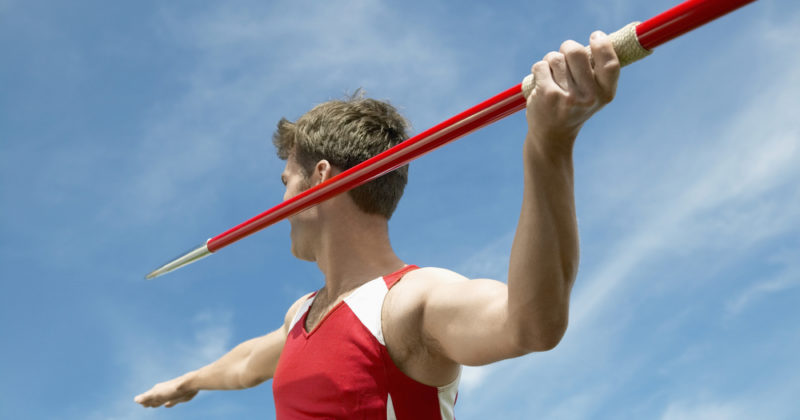We explain what athletics is, its history and what disciplines it covers. Also, its relationship with the Olympic Games.

What is athletics?
athletics It is one of the main and oldest Olympic sports. It consists of testing the human body in different competitive modalities, such as running, jumping and throwing.
Among Olympic sports and practices, athletics enjoys an important reputation. It is often considered the “natural sport”, that is, one that involves the basic movements of the body in relation to human development, such as running, jumping and throwing.
In this sense, the practice of athletics brings together different tests on the same stage, divided according to the type of exercise. Carrying out these athletic activities involves muscle exercise, mainly using strength.
The main current tests of athletics practice are:
- Races of different meters in length.
- Jumps of different types.
- Launches of different objects.
- Combined sports tests.
Etymology of “athletics”
The word “athletics” comes from the Greek word athlos,which means “competition” or “contention”. The word “athlete” also comes from there, which refers to the individual who competes in order to obtain recognition.
See also: Individual sports
History of athletics
Although the roots of athletics date back to different sporting practices of Antiquity, athletics as a discipline had its origins in the games and competitions that took place in public spaces in ancient times in Greece and Rome.
In fact, The first historical reference to athletics dates back to the year 776 BC. c and consists of a list of athletes awarded in a competition in Ancient Greece. At that time, the events that make up athletics were part of the Olympic Games that were held in at least 38 Greek cities.
From 186 BC. C., athletics began to be practiced by the Romans, and enjoyed such popularity that in 86 AD. C. the Domitian Stadium was built exclusively for its practice. However, after the fall of the Roman Empire, these practices disappeared because they were associated with the pagan world.
Throughout the Middle Ages, different types of races and athletic competitions emerged in different corners of the West. Eventually, these practices converged again in the 19th century, and in 1825 the first modern athletics competition was held outside London, England.
This new discipline soon spread to France and later to the United States, and reached the rest of the Western nations by the end of the century. In 1912, the International Athletics Federation was created, as amateur practice gave way to professional practice, and from the second half of the 20th century the sport became internationalized and became an important Olympic sport, with universal participation.
Disciplines of professional athletics
The tests that make up a professional athletics competition today are: running, jumping and throwing.
Racing

Athletics involves different types of races, in which each athlete or team of athletes must reach the goal before their opponents, covering some distance at full speed.
The main types of races are:
- speed racing. They are some of the best-known events in athletics and have been part of this sport since its beginnings. They consist of traveling a distance that varies between 100 and 400 meters, in the shortest time possible.
- Long distance running. They are tests that consist of a distance of more than 3,000 meters, testing the physical resistance of each athlete.
- Marathons or long distance races. They are the most intense and demanding races, in which a distance of 42,195 meters is covered. In this case, however, the athletes do not compete directly against others, but with themselves, that is, against their established times, to try to break their personal record.
- Middle distance races. In these tests, the distance that must be covered is halfway between sprint races and distance races: between 800 and 3,000 meters.
- obstacle courses. Also called “hurdle races”, they are competitions in which athletes must combine running with controlled jumping over a series of hurdles that are placed along the way. They can be races of 2,000 to 3,000 meters in length.
- relay races. These are tests that are competed in teams of four athletes each, distributed along the track at a rate of one every 100 meters of distance. The purpose is to deliver a baton or talent to the next runner before the athletes of the other teams, since the first to take the baton to the starting point (completing the entire 400-meter lap) is the winning team.
- Racing on routes or streets. These tests are not recognized as a discipline in the Olympic Games or other competitions. They are usually practiced outside the track or athletics stadium, on routes, roads or streets of a town or city.
- cross country racing. Although these are not currently tests that are found in the Olympic Games, they were in previous editions. They consist of traveling a distance within a natural circuit without urban features. There are individual and team modalities.
Why is it called a “marathon”?
The marathon is the athletic event par excellence. Remember the feat achieved in the year 490 BC. C. by the Greek soldier Pheidippides, sent from the city of Marathon to Athens, with the aim of announcing the victory of the Athenians over the Persians in the battle of Marathon.
Jumps

Jumps in athletics can be of different types, depending on the implements with which the athlete propels himself to jump. These are tests that test the force with which the human body propels itself through the air.
The main types of athletic jumps are:
- Pole vault. Also known as “pole vaulting”, it consists of passing the body over a horizontal bar in the middle of the jump, using a long, flexible bar called a “pole” or “pole”, after gaining momentum for a distance of 30 meters.
- High jump. It is similar to pole vaulting, but is performed without the help of any instrument, simply gaining momentum and then jumping over a bar or horizontal bar. It is repeated on three different occasions.
- Long jump. It consists of jumping the maximum possible distance over a horizontal space, through the momentum achieved after a previous run. The jump is usually done on a sand surface, to measure the total distance of each jump with the footprints left by the body.
- Triple jump. It is a variant of the long jump, in which a specific sequence of steps is followed to make the jump: two consecutive preparatory jumps with the non-dominant leg, and then the final push with a change of leg.
Releases

Throws in athletics are classified according to the instrument that is thrown, but their logic is the same: overcome the greatest possible distance with the thrown object.
There are the following types of athletic throwing:
- Shot put. It consists of the throwing of a ball by a competitor.
- Discus throw. It consists of throwing an object with a circular shape and a pronounced weight.
- javelin throw. It consists of throwing a javelin made with authorized material.
- Hammer throw. It consists of launching a metal ball attached to a handle by a steel cable. This object is thrown after the athlete makes several consecutive turns around its own axis.
Combined tests
In addition to the basic athletics tests, there are several combined tests, that is, they integrate different tests into one, involving disciplines other than athletics. Each test is performed by the same athlete, over one or two days.
The main combined tests are:
- Triathlon. Three sports disciplines are combined, which are usually running, swimming and cycling. They compete individually in circuits of different length and complexity.
- Pentathlon. Five sports disciplines are combined over one or two days. These disciplines are usually running, swimming, fencing, horse riding and shooting sports.
- Heptathlon. Seven different sports disciplines are combined over two consecutive days. These disciplines are the hurdle race, the high jump, the shot put, the sprint, the long jump, the javelin throw and the middle distance race.
- Decathlon. Ten different disciplines are combined over two or three days. These are usually four runs, three jumps and three throws, at the choice of the organizing committee.
Athletics and Olympic Games
Athletics is directly related to the establishment of the Olympic Games, which constitute the largest sporting event in the world. Athletics was among the disciplines of the first modern Olympics, held in Athens in 1896, and has been an indispensable part of its competitions ever since.
In the first half of the 20th century, most of the Olympic practitioners of this sport came from Europe and the United States. Over the decades, different countries joined the professional practice of athletics, and starting in 1980, it was established as a universal sport, fundamental for contemporary sports culture.
References
- International Olympic Committee. (2024). Athletics. https://olympics.com/
- Mansilla, I. (1994). Know athletics. History, technique and practice of a sport with tradition. Gymnos.
- Stoves Baz, I. (2000). Athletics. INDE.





